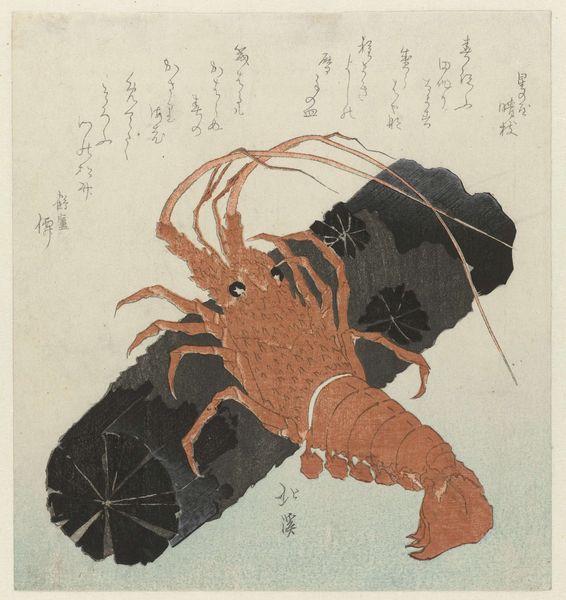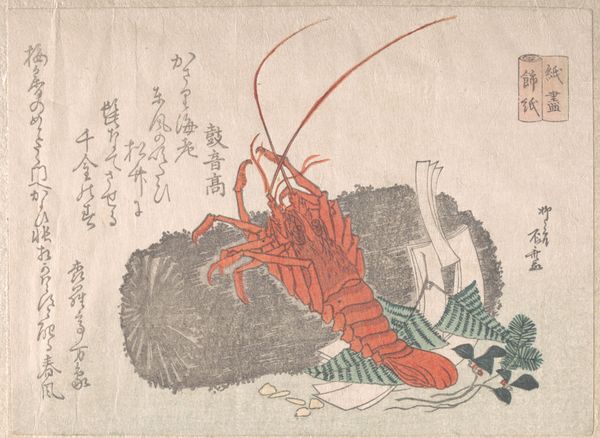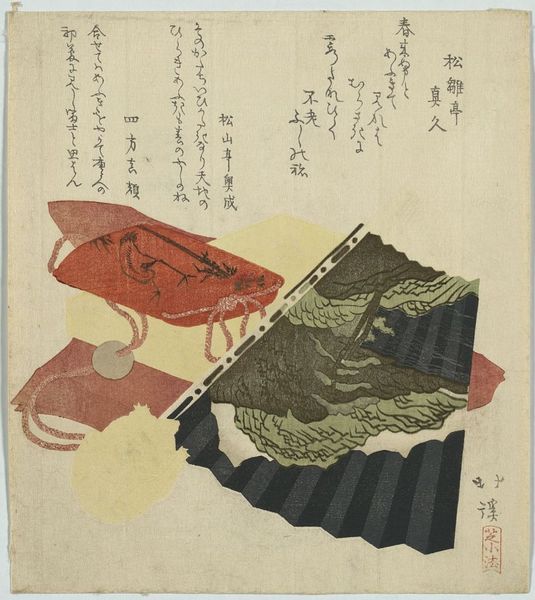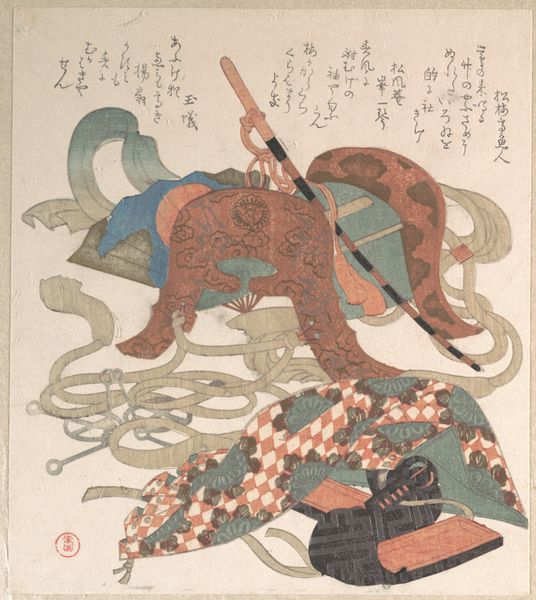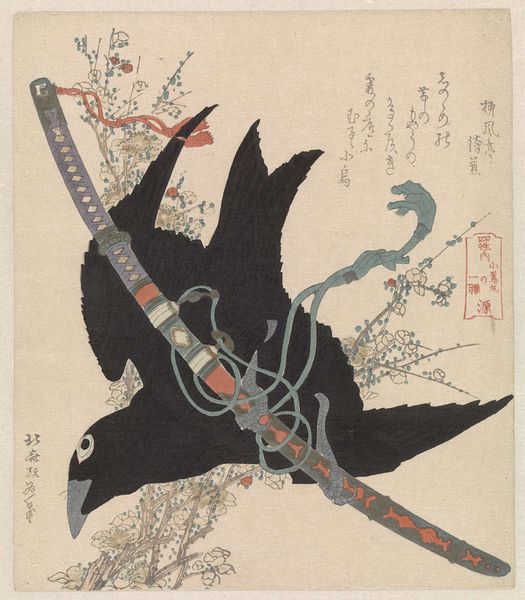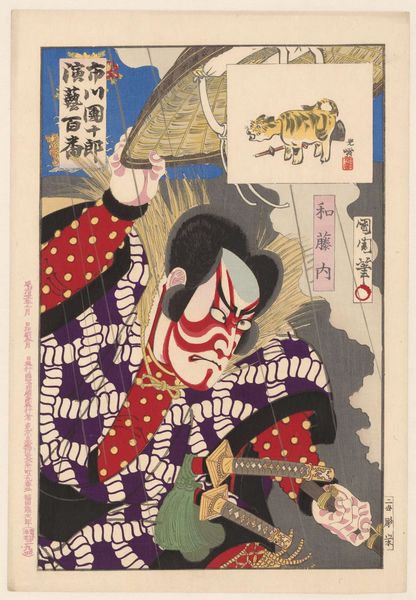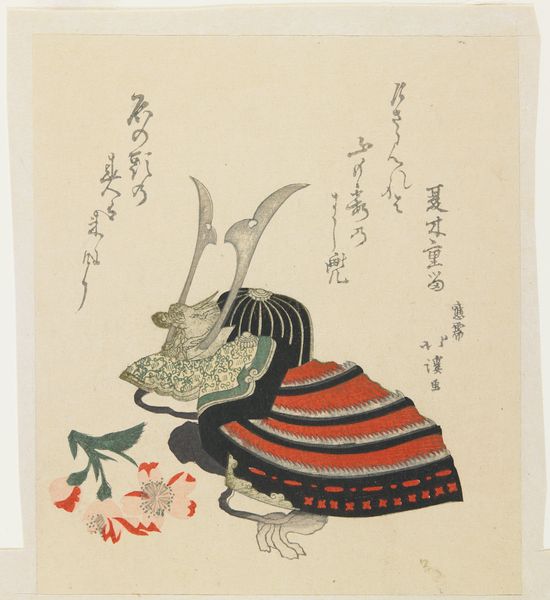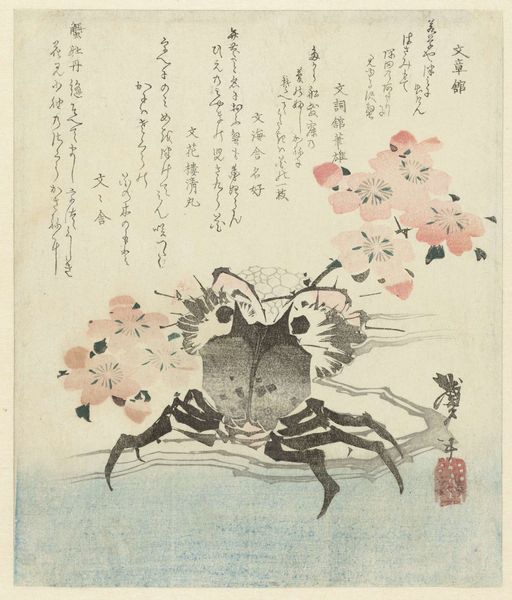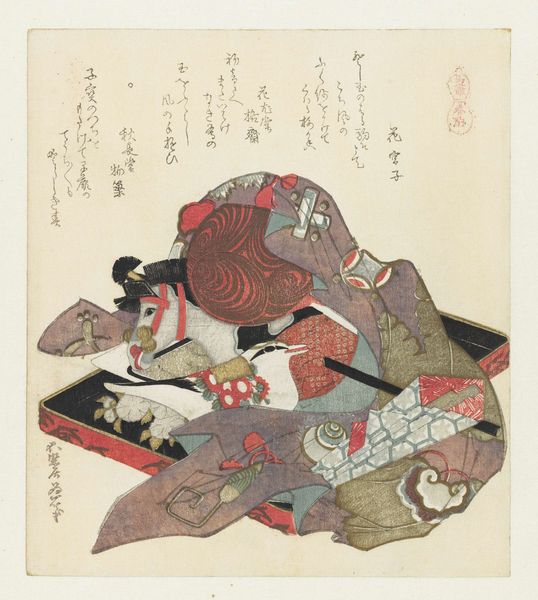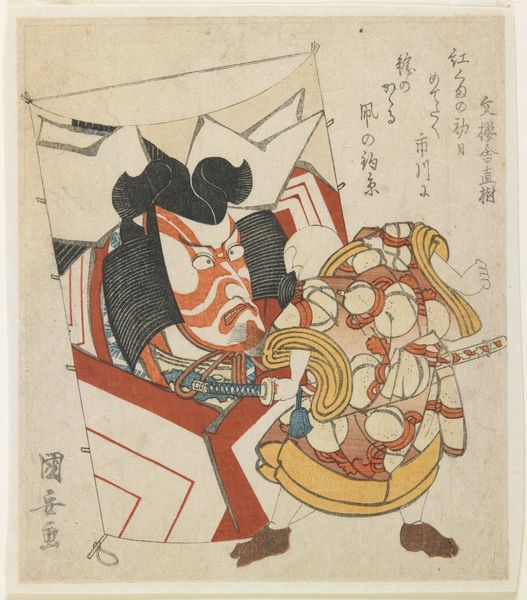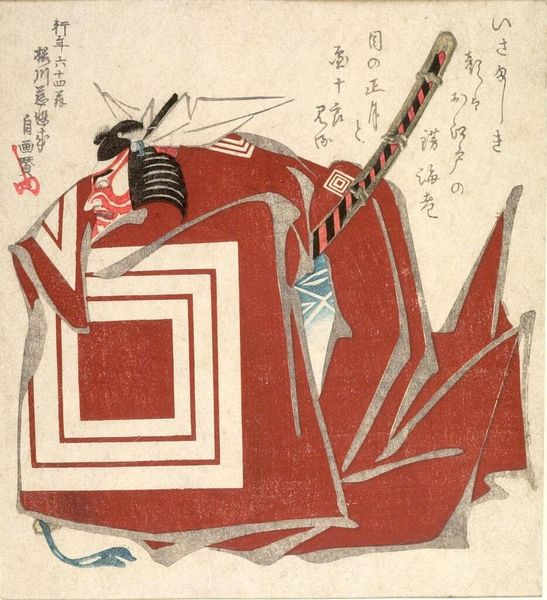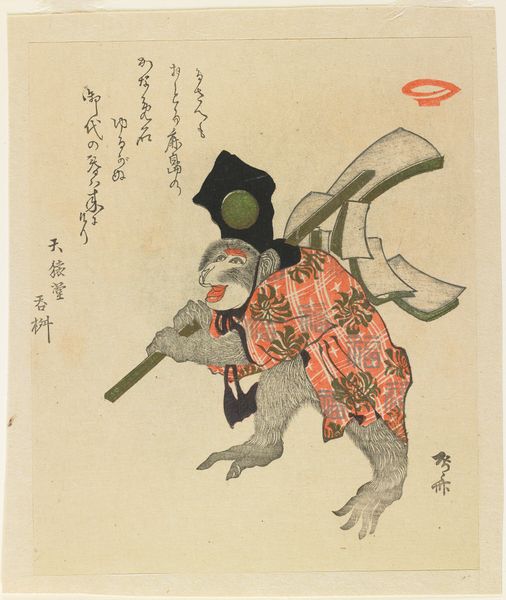
print, woodblock-print
#
portrait
# print
#
asian-art
#
ukiyo-e
#
woodblock-print
Dimensions: height 201 mm, width 170 mm
Copyright: Rijks Museum: Open Domain
Totoya Hokkei’s woodblock print presents a kabuki actor's portrait alongside a langoustine, crafted in Japan around 1820-1840. The actor, Ichikawa Danjuro VII, is depicted with a striking red and white makeup mask, known as "kumadori," signifying courage, justice, and other virtuous qualities. This mask, with its exaggerated lines and vivid colors, echoes the ancient Greek theatrical masks, designed to amplify emotions and project characters to vast audiences. Similarly, the langoustine, a symbol of longevity and good fortune in Japanese culture, mirrors the symbolic use of animals in various cultures, such as the snake representing healing in Greco-Roman traditions. The actor's fierce expression, frozen in time, reminds us of the "pathos formula," a concept where certain gestures and expressions become codified to represent specific emotional states across different art forms and eras. It reflects the ever-evolving yet continuously resurfacing nature of symbols in our collective consciousness.
Comments
No comments
Be the first to comment and join the conversation on the ultimate creative platform.
